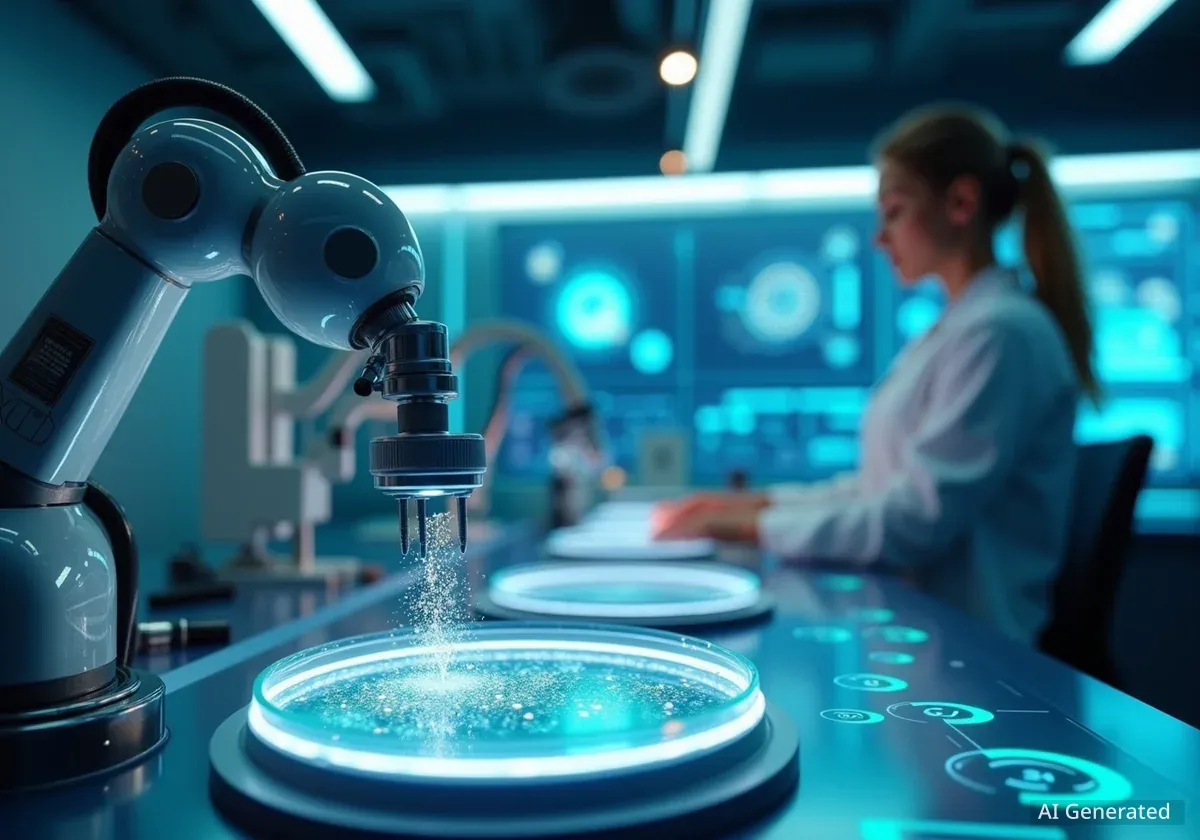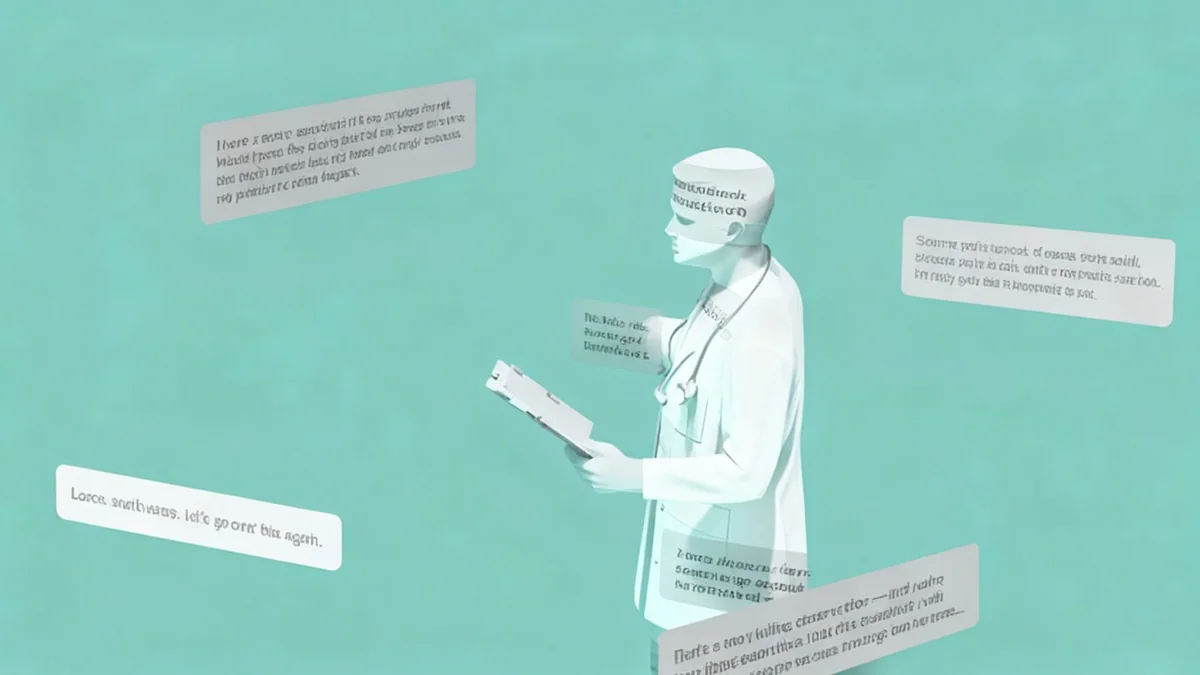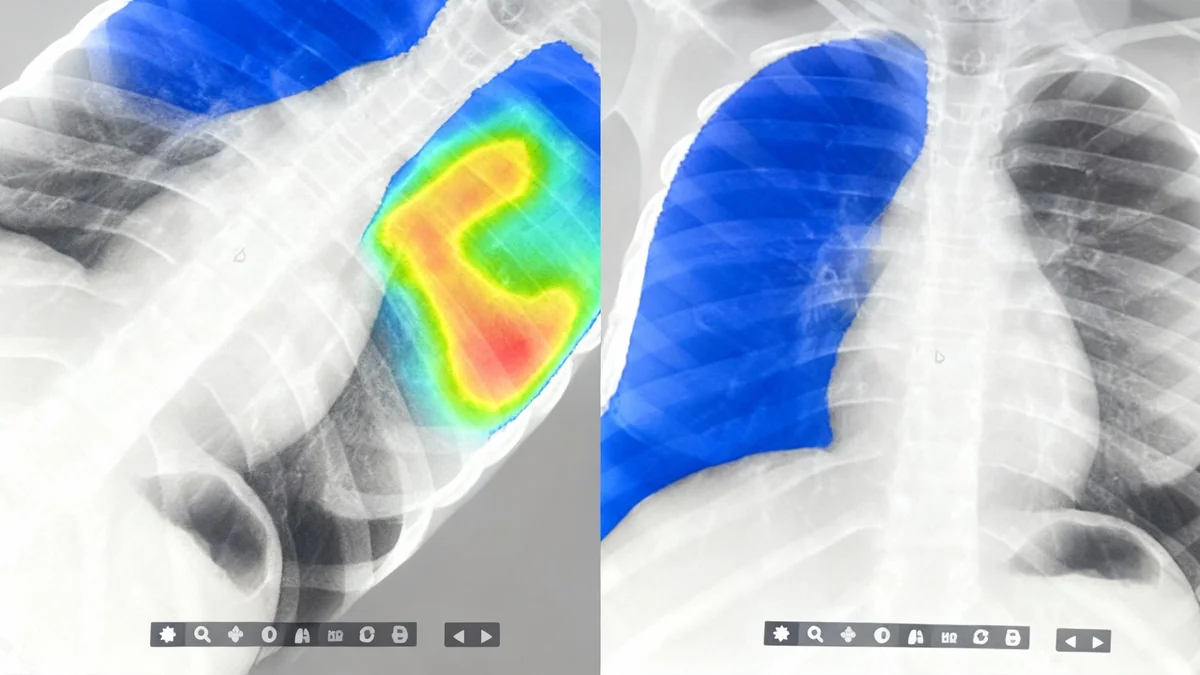Generative artificial intelligence (GAI) is rapidly moving beyond consumer applications and is now automating a wide range of complex tasks in medicine. This technology, which uses advanced machine learning to create new text, images, and data, is being applied to everything from clinical decision support for doctors to the design and analysis of scientific research. Its ability to work with smaller, specialized datasets is accelerating its adoption across the healthcare sector.
Unlike earlier forms of AI that required massive volumes of labeled data, newer GAI models are demonstrating high performance with more efficient training methods. This shift is enabling new capabilities in diagnostics, drug discovery, and patient care, while also presenting unique challenges for validation and ethical oversight. Recent advancements, including AI agents and reasoning models, are further expanding the potential for these tools to handle multistage medical tasks.
Key Takeaways
- Generative AI is being used for clinical support, research, and administrative tasks in healthcare.
- Newer AI models require less training data, allowing for more specialized medical applications.
- Key uses include enhancing diagnostics, accelerating drug discovery, and reducing administrative burdens on clinicians.
- Despite its potential, challenges related to accuracy, ethical use, and proper validation remain significant hurdles.
- Advanced GAI systems, known as agents, can now manage complex, multi-step tasks, acting as assistants to medical professionals.
Understanding Generative AI in a Medical Context
Generative AI refers to a category of artificial intelligence systems built on machine learning and transformer model architectures. These models are trained on vast amounts of data to learn patterns and structures, enabling them to generate new and relevant content, such as text, images, or sounds, in response to specific prompts or queries.
In the past, biomedical AI applications often relied on fully supervised training. This process required enormous, meticulously labeled datasets, which are often expensive and time-consuming to create in a medical setting. According to a 2025 review in Nature Medicine, GAI represents a significant technical shift.
Modern GAI techniques have evolved to use less label-intensive approaches. These include methods like weakly supervised fine-tuning and reinforcement learning, which allow the models to learn from more varied and less structured data. This makes it possible to train powerful AI on smaller, domain-specific datasets, such as a collection of medical images or clinical notes from a specific hospital department.
From General Purpose to Specialized Tools
Early deep-learning models in healthcare were often general-purpose systems adapted for medical tasks. The current generation of GAI, however, can be fine-tuned into highly specialized tools. For example, a model can be trained specifically on radiological images to detect subtle signs of disease or on protein structures to predict molecular interactions, as seen with models like AlphaFold.
Transforming Clinical Practice and Patient Care
One of the most promising areas for GAI is in direct clinical applications that support healthcare professionals and improve patient outcomes. These tools are not intended to replace clinicians but to augment their abilities, helping them make faster, more informed decisions.
Enhancing Diagnostics and Decision Support
GAI models can analyze medical images, such as X-rays, MRIs, and retinal scans, to identify patterns that may be invisible to the human eye. For instance, a foundation model trained on retinal images has shown the ability to detect generalizable signs of disease. Similarly, vision-language models can now generate realistic chest X-ray images, which can be used for training and simulation.
These systems also function as powerful decision support tools. A doctor could, for example, query an AI assistant about potential diagnoses based on a patient's symptoms and lab results. According to a study published in JAMA Internal Medicine, AI chatbot responses to patient questions were sometimes rated as more empathetic and higher quality than those from human physicians.
Did You Know?
Some large language models (LLMs) have demonstrated the ability to pass the United States Medical Licensing Examination (USMLE). Models like ChatGPT and others have shown performance that approaches or meets the passing threshold, highlighting their capacity to encode and recall vast amounts of clinical knowledge.
Mental Health and Conversational AI
Conversational AI agents, or chatbots, are being developed to provide support for mental well-being. These agents can offer empathetic conversations, deliver cognitive behavioral therapy exercises, and provide a first line of support for individuals who may not have immediate access to a human therapist. However, the ethical implications and safety of using AI for mental health are areas of active debate and research.
"Large language models will not replace healthcare professionals. The focus should be on curbing popular fears and hype while exploring how these tools can best serve as assistants to clinicians." - Dr. Arun James Thirunavukarasu, Journal of the Royal Society of Medicine.
Revolutionizing Medical Research and Drug Discovery
Beyond the clinic, generative AI is having a profound impact on biomedical research. Its ability to process and model complex biological data is accelerating the pace of discovery in fields from genomics to pharmacology.
Accelerating Drug and Protein Discovery
A prime example of GAI's research potential is AlphaFold, a model developed by Google DeepMind. AlphaFold can predict the 3D structure of proteins with remarkable accuracy, a task that traditionally took years of laboratory work. This has opened up new avenues for understanding diseases and designing targeted drugs.
Recently, AlphaFold 3 was released, capable of predicting the structure of interactions between proteins and other molecules. This technology is already being used to discover novel small molecule inhibitors for diseases like cancer, drastically shortening the initial phases of drug discovery.
Generating Synthetic Data for Research
One of the major bottlenecks in medical research is the availability of large, diverse, and privacy-compliant patient datasets. Generative AI offers a solution through the creation of synthetic data. Models can learn the statistical properties of a real patient dataset and then generate an entirely new, artificial dataset that mirrors the original without containing any real patient information.
This synthetic data can be used to:
- Train other AI models without privacy risks.
- Augment small datasets to improve model performance.
- Share data more freely between research institutions.
Streamlining Healthcare's Administrative Burden
Clinician burnout is a major crisis in healthcare, driven in large part by extensive administrative tasks and electronic health record (EHR) documentation. Generative AI is poised to alleviate much of this burden through automation.
AI-powered "digital scribes" can listen to a doctor-patient conversation and automatically generate a clinical note, freeing the physician to focus on the patient. Studies have shown these tools can significantly reduce documentation time. Similarly, GAI can summarize long patient histories, generate informed consent documents, and create multilingual discharge instructions that are easy for patients to understand.
Another application is in automated clinical coding, where AI models assign standardized billing codes based on clinical notes. While current models still struggle with accuracy, the technology is rapidly improving and could one day streamline the complex medical billing process.
The Rise of Agentic AI
The latest evolution of GAI involves "agentic AI" or AI agents. These are autonomous systems that can perform complex, multi-step tasks by reasoning, planning, and using other tools. In medicine, an AI agent could be tasked with analyzing a new research paper, cross-referencing its findings with patient data, and suggesting a personalized treatment plan for a clinician to review.
Challenges and the Path Forward
Despite the enormous potential, the integration of generative AI into medicine is not without significant challenges. Ensuring the accuracy, reliability, and safety of these models is paramount. Issues such as algorithmic bias, where models perpetuate existing disparities in healthcare data, must be addressed.
Furthermore, a clear regulatory framework is needed to govern the development and deployment of medical AI. Establishing standardized evaluation methods, like the proposed S.C.O.R.E. framework (Safety, Consensus, Objectivity, Reproducibility, and Explainability), is crucial for building trust among clinicians and patients.
The future of GAI in medicine will likely involve a collaborative model where AI handles data processing and administrative tasks, while human professionals oversee critical decision-making, ensuring patient safety and providing the essential human element of care.





